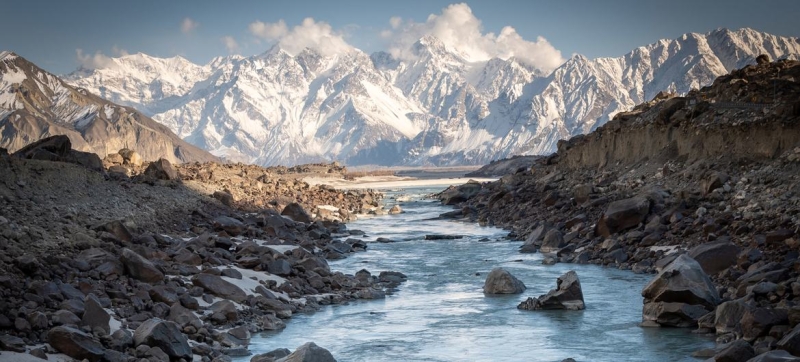
The rate of glacier retreat has accelerated. The UN launched the International Year of Glacier Conservation Climate and Environment
Glaciers play a key role in shaping the planet’s climate and providing billions of people with fresh water. However, due to global warming, they are rapidly melting. To draw attention to this problem, the United Nations, at the initiative of Tajikistan, declared 2025 the International Year of Glacier Conservation. Today, it was officially launched.
In this way, the UN hopes to raise awareness among the international community about the vital role of glaciers in the climate system and hydrological cycle, and about the economic, social, and environmental consequences of changes in the Earth’s cryosphere.
Glaciers are a vital source of fresh water
A glacier is a large accumulation of ice and snow that forms on land and can move under its own weight. Glaciers are found on all continents, in mountainous regions, and along the edges of the Greenland and Antarctic ice sheets. There are more than 275,000 of them in the world, covering an area of about 700,000 square kilometers. Glaciers store about 70 percent of the world’s fresh water.
More than 2 billion people, including many indigenous peoples, depend on melting ice and snow to provide them with water for drinking and farming. Preserving glaciers is essential for environmental and economic stability.
Glaciers as Climate Change Indicators
Glaciers are sensitive indicators of climate change, retreating worldwide due to rising temperatures. This process has been observed since the mid-19th century (the end of the so-called Little Ice Age). Although short-term increases in glacier mass have been observed at various times and in different regions, their retreat has recently accelerated due to rapid warming of the planet caused by increasing concentrations of greenhouse gases in the atmosphere. Higher global temperatures lead to shorter seasons of snow accumulation.
Fresh water will become increasingly scarce
Climate and cryosphere change affect the water cycle, including glacier and snow melt and groundwater recharge, and contribute to sea level rise. As glaciers shrink and snow cover changes, freshwater becomes less available, leading, among other things, to increased competition for water resources, especially in arid regions.
Glaciers that have already “peaked” – the point at which meltwater runoff reaches its maximum level – will gradually contribute less to water recharge.
New threats and risks from glacier and permafrost melt
Climate change affects the frequency of natural hazards with potential cascading effects. Mountain slope stability and flood risk may be related to glacier retreat and permafrost melting in highland and subarctic regions. Ice melting may also lead to glacial lake outburst floods, landslides, or increased soil erosion.
Why Tajikistan Called to Declare an International Year
Today, out of 14 thousand glaciers in Tajikistan, which are the main source of drinking water in the Central Asian region, more than a thousand have completely melted. Moreover, the rate of their melting is increasing. This is why the country’s authorities have come up with the initiative of an International Year of Glacier Conservation.
An international conference dedicated to this problem will be held in Dushanbe this year.
The Need for Immediate Action
Glaciers are retreating at an unprecedented rate, changing the world landscape. Despite their critical role in environmental stability, countries do not always take the challenges and potential impacts associated with them into account when formulating their policies.
The UN emphasizes that glaciers can be protected and conserved by reducing greenhouse gas emissions and adopting adaptation and mitigation strategies. Using indigenous knowledge, meteorological data, and scientific analysis will provide a comprehensive and inclusive basis for formulating the necessary policies. Key measures to protect glaciers should include the establishment of protected areas, systematic monitoring, sustainable land use practices, the implementation of integrated water resources management, and the development of warning systems to combat cryospheric risks.
